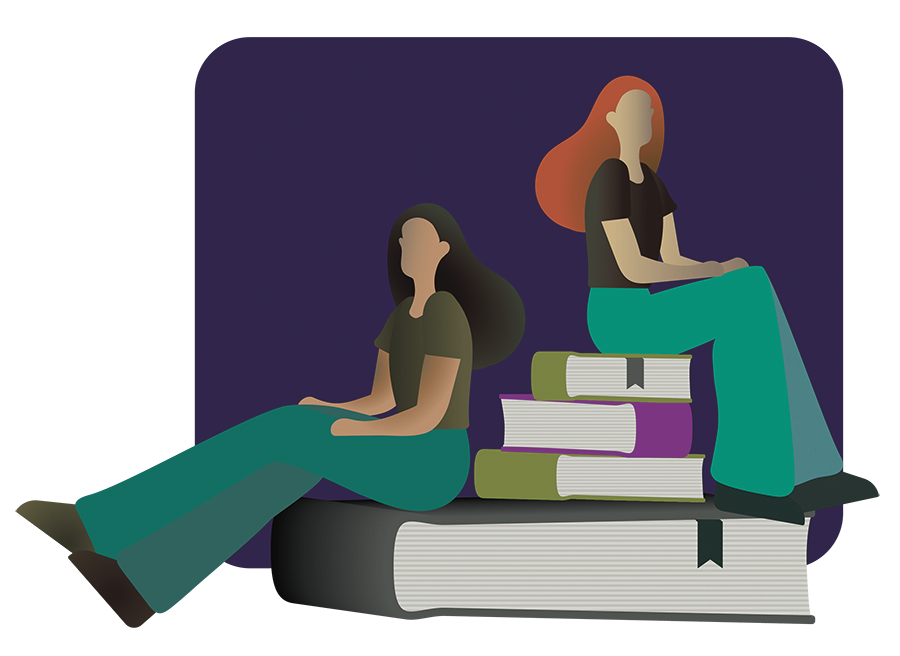Misinformation hurts both people and democracy
May 3, 2022
What is real in the media? Who can I trust? How can I decipher what is fake news versus real news? Where should I be looking for real news? And furthermore, why should I care?
Propaganda has been around presumably forever. It is human nature to believe that we and those we surround ourselves with are right and just. So, we are “good” and those who disagree with us are “bad.”
Fake news was needed as a weapon to create momentum against the “bad guys.” Controlling the mind and controlling what others believe to be true is mind control. And with mind control comes power. Communist Dictator of the Soviet Union Joseph Stalin gave the Soviet people and people in occupied territories his own foundation of knowledge, beginning in 1922.
The Netflix program “How to Become a Tyrant” explains plainly how Stalin, aided by censorship, slow-played the brilliant, manipulative fake news idea. Stalin censored books in schools and libraries, including even timeless novels of exploration such as “Robinson Crusoe.”
Stalin chose to ban books such as “Sherlock Holmes” as it encourages asking questions and searching for truth. In 1931, Stalin was Dictator of Ukraine. Wanting their land and other resources for himself, he kept the Ukrainian people starving and impoverished. Stalin controlled all broadcasted news and newsprint, favoring only his Communist, tyrannical agenda and pandering hard work from his citizens in order achieve what he believed to be a greater good.
This, we learned, was not for a greater good, but was only to serve Stalin himself. Stalin’s fake news, combined with censorship, left little hope to those who initially might have a more discerning attitude about what is true. It is hard to think critically when you haven’t eaten, and the library, the radio and the newsstand only have literature that is either benign or false truth.
Nearly 100 years later, fake news would get an unrighteous amount of attention during the 2016 presidential election between opposing front runners Donald Trump and Hillary Clinton. Reporters and pundits on both sides of the political race expressed that fake news media was grossly out of hand.
One notable scandal at this time was nicknamed “Pizza Gate.” Pizza Gate is a since-debunked conspiracy that made headline news for many weeks, with countless rumors attached to it. Allegedly, an email was exposed from the Clinton office supposing that a homosexual, pedophilic pornography trading ring was operating out of a pizzeria in Washington D.C. named Comet Ping Pong. The people of Comet Ping Pong were innocent.
They, alongside the whole queer community, suffered much (as did the Clinton campaign) because of these falsities. Molly Levinson of Comet Ping Pong stated, “Fake news is hate.”
Misinformation hurts people. And what misinformation is truly hurting is democracy. One can imagine the world itself might be a better place if Soviets and Ukrainians in the Stalin Era and Americans in the present were more capable of thinking for themselves.
So how do we operate around all this? Cody Walker, a college English instructor in Springfield, Missouri shares where he gets his news.
Walker uses NPR (National Public Radio) and AP (Associated Press) Wire as news sources, stating they are not infallible but largely reliable for unbiased material. Walker’s tip regarding finding reliable information as a student is to avoid 24-hour news networks and sources they have not heard of.
“The problem is that their media knowledge is so low they ask things like ‘Is the New York Times a good source?’” Walker said.
Walker encourages them to research more about the source itself, to read how long the source has been around and to look for key words that show potential biases in their “About” pages.
Another good exercise for college students to stretch their “discerning muscles” is Debate Club, as well as Media Literacy courses which teach the ability to think critically and effectively communicate. Debate exercises force you to actually dive into a fact-finding activity from two or more opposing sides. This is a healthy way to decipher information.
For instance, you may not agree that pit bulls should be excluded from your local dog park because it seems discriminatory against pit bull owners. But if you look at information from those who support banning pit bulls from dog parks, you might learn of five dog bites from the last year resulting in citations from injuries caused by these dogs. Seeing both sides of an argument allow for a more well-rounded perspective.
Understanding why the fake news cycle is so popular now can prepare one to be more critical. The Daily Gazette of Schenectady, New York explains, “The misinformation factory model is so successful because it can be easily executed, replicated and stream-lined, and often requires very little expertise to operate. Meanwhile, legitimate news sources […] are suffering.”
So, when searching for reliable information, first ask yourself, why do these people want me to know this information? Search who the publishers are, what they have written before and take a step back to think critically each time. Ask, does this sound right to me?
Staying informed
Madison College Libraries offers excellent tutorials on fake news, including segments on Why Does Fake News Matter? And How to Spot Fake News: https://libguides.madisoncollege.edu/HOWLER/FakeNews
For more info on Ethics in Journalism, visit: spj.org/ethicscode.asp
For news on elections, visit the Women’s League of Voters: lwv.org
Voter registration in Wisconsin: myvote.wi.gov






























